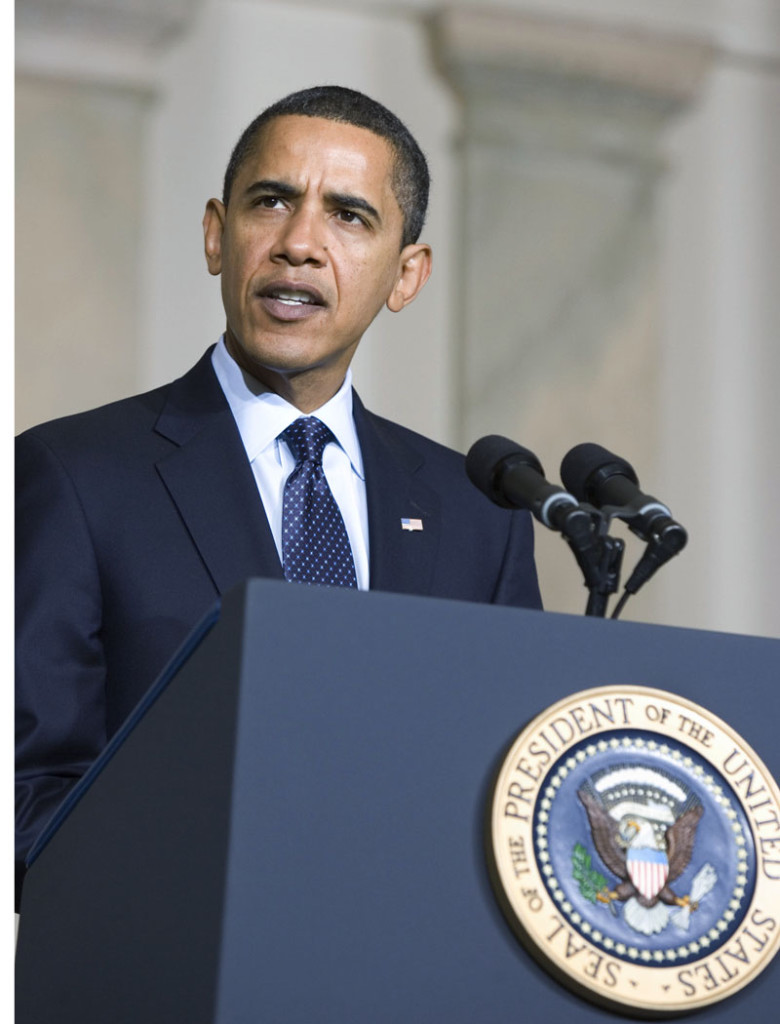In response to the Environmental Protection Agency’s (EPA) proposed carbon dioxide rule for existing power plants, Americans submitted millions of public comments ranging from technical tomes to angry missives. Perhaps no comment stood out more than that of Harvard Law Professor Laurence H. Tribe.
President Obama studied under Professor Tribe as a student at Harvard Law School in the late-80s. Tribe has described Obama as “the best student I ever had” and supported his presidential campaigns.
Despite his adulation for President Obama, Tribe is less impressed with his former student’s respect for the rule of law. In comments co-authored by Peabody Energy, Tribe gives the EPA low marks for violating the Constitution. As Tribe puts it:
The central principle at stake is the rule of law—the basic premise that EPA must comply with fundamental statutory and constitutional requirements in carrying out its mission. The Proposed Rule should be withdrawn. It is a remarkable example of executive overreach and an administrative agency’s assertion of power beyond its statutory authority. Indeed, the Proposed Rule raises serious constitutional questions.
Tribe explains that EPA is fundamentally misinterpreting a key section of the Clean Air Act (CAA) to suit its agenda. Essentially, EPA claims that the 1990 amendments to the CAA created two separate versions of Section 111. Given this perceived “ambiguity,” EPA has assumed the discretion to “pick and choose” how it interprets the statute.
As Tribe explains, “EPA acknowledges that a ‘literal’ application of Section 111(d) would preclude the Proposed Rule” but EPA proposed the rule because of an ambiguity between various versions of section 111. But as Tribe further explains, “EPA makes no effort to identify anything that would normally be described as an ‘ambiguity’—namely, the existence of more than one possible meaning in the language that appears in a statutory provision enacted by Congress, a provision that all accept as the starting point for analysis.”
EPA’s power grab “raises grave constitutional questions,” according to Tribe, who goes on to detail how EPA’s rule runs afoul of the Constitution’s Article I, Article II, the Fifth and Tenth Amendments, and separation of powers.
In addition to violating the Constitution, EPA’s climate rule will impose enormous costs and have almost no impact on climate change. The proposed rule could cost at least $366 billion, with residents in 43 states seeing double-digit percent increases in their electricity bills, according to a recent report by NERA Economic Consulting. For all that pain, the rule is expected to reduce global carbon dioxide emissions just 1.5 percent by 2050.
Even if you support EPA’s goals, you should question the agency’s methods. Tribe concludes:
At bottom, the Proposed Rule hides political choices and frustrates accountability. It forces states to adopt policies that will raise energy costs and prove deeply unpopular, while cloaking those policies in the garb of state “choice”—even though in fact the polices are compelled by EPA. The Supreme Court has strongly condemned such arrangements, because “where the Federal Government directs the States to regulate, it may be state officials who will bear the brunt of public disapproval, while the federal officials who devised the regulatory program may remain insulated from the electoral ramifications of their decision.” New York v. United States, 505 U.S. at 169; see also Printz v. United States, 521 U.S. at 923 (citing need for “accountability” as a reason to prohibit federal government from forcing state officials to implement federal policy). The EPA thumbs its nose at democratic principles by confusing the chain of decision-making between federal and state regulators to avoid political transparency and accountability.
To read Professor Tribe’s full comment, click here.
